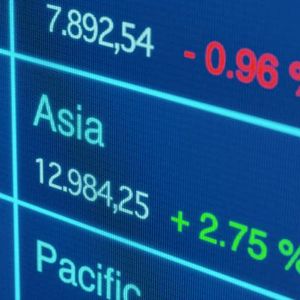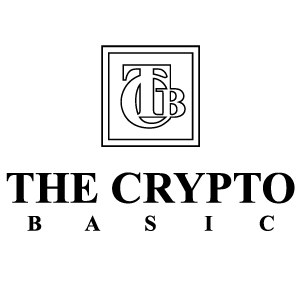Asia stock trade mixed on Monday, driven by a sell-off in tech shares that mirrored Wall Street's performance on Friday. Japan saw the biggest declines. Hong Kong's market was a notable exception, climbing on the news that a private survey showed a rebound in Chinese factory activity. Market participants are holding back from major moves as they await upcoming U.S. labor and macroeconomic data, while also keeping an eye on ongoing trade and tariff uncertainties. According to U.S. Trade Representative Jamieson Greer, the court's interim ruling will not derail ongoing talks. He noted on Sunday that trading partners are continuing to engage with the U.S. and that trade deals are still progressing. Silver surged 2% to above $40 per ounce on Monday, reaching its highest level since September 2011. Gold prices climbed above $3,470 per ounce on Monday, nearing a record high amid uncertainty over President Donald Trump’s tariffs and increased bets for a US interest-rate cut. Indonesia’s annual inflation eased slightly to 2.31% in August 2025, down from 2.37% in July, which had marked the highest rate since June 2024. Indonesia’s trade surplus declined to USD 4.18 billion in July 2025, down from USD 5.01 billion in the same month a year earlier. Exports rose 9.86% year-on-year, easing from an 11.29% gain in June. Meanwhile, imports fell 5.86% year-on-year, reversing a 4.28% increase in June. Japan ( NKY:IND ) fell 1.55% to below 42,300 on Monday, extending losses from the previous session. The Japanese yen strengthened to around 146.8 per dollar on Monday, recovering losses from the previous session. Japan's manufacturing sector continued its prolonged contraction in August. The S&P Global Japan Manufacturing PMI was revised down to 49.7 from 49.9, marking the 13th month of contraction in the last 14. Separately, data showed Japanese companies boosted capital spending by 7.6% in Q2 2025, up from 6.4% in Q1 and above forecasts of 6.2%. China ( SHCOMP ) rose 0.25% to above 3,870 while the Shenzhen Component added 0.2% to 12,720 on Monday, advancing for the third straight session, and the offshore yuan weakened slightly toward 7.13 per dollar on Monday, but stayed close to its highest level in almost ten months, as traders weighed mixed signals from economic and geopolitical fronts. The RatingDog China General Manufacturing PMI rose to 50.5, up from 49.3 in July and above the forecasted 49.5. The NBS Manufacturing PMI inched up to 49.4 in August, missing the forecasted 49.5. China’s official NBS Non-Manufacturing PMI rose to 50.3 in August 2025 from July’s eight-month low of 50.1, matching market expectations and signaling modest expansion in services activity. China’s NBS Composite PMI Output Index increased to 50.5 in August 2025. On the geopolitical front, Chinese leader Xi Jinping and Indian Prime Minister Narendra Modi pledged on Sunday to resolve border differences and enhance cooperation ahead of a regional summit in Tianjin. Hong Kong ( HSI ) rose 1.92% to 25,600 in morning trade on Monday, the first session of the new month, extending gains from the prior session as investors cheered upbeat Chinese factory data. Alibaba Group ( BABA ) climbed 12.9% after saying AI was key to expanding its cloud computing business. India ( SENSEX ) rose 0.33% The Indian rupee traded to around 88.15 per dollar on Monday, holding near its record low as markets absorbed the impact of fresh US tariffs on Indian exports and heavy foreign equity outflows. The HSBC India Manufacturing PMI rose to 59.3 in August 2025 from 59.1 in July, but was revised lower from initial estimates of 59.8. Australia ( AS51 ) fell 0.55% to 8,958 on Monday, reversing gains from the previous week. The Australian dollar appreciated past $0.654 on Monday, marking its fifth consecutive session of gains and its highest level in over two weeks, amid a mixed set of domestic economic indicators. The S&P Global Australia Manufacturing PMI climbed to 53 in August 2025 from 51.3 in July, marking its fastest expansion since September 2022. ANZ-Indeed Australian Job Ads inched up 0.1% month-on-month in August 2025. Private house approvals in Australia grew by 1.1% month-over-month to 9,288 units in July 2025. Australia’s business inventories rose by 0.1% quarter-on-quarter in Q2 2025, a sharp slowdown from the upwardly revised 1.2% growth recorded in the previous quarter. The seasonally adjusted number of total dwellings approved in Australia dropped by 8.2% month-over-month to 15,769 units in July 2025. Corporate profits in Australia unexpectedly fell by 2.4% quarter-on-quarter in Q2 2025, missing market forecasts of a 1.2% increase. In the U.S. on Friday, all three major indexes ended lower as the S&P 500 retreated from record highs, amid ongoing signs of persistent inflation in the US economy. U.S. stock futures : Dow flat; S&P 500 -0.06% ; Nasdaq -0.17% . Currencies: ( JPY:USD ), ( CNY:USD ), ( AUD:USD ), ( INR:USD ), ( HKD:USD ), ( NZD:USD ). More on Asia: China's factory activity rebounds in private survey while official data stays weak Japan manufacturing PMI revised down to 49.7 in August, shrinks for 13th time in 14 months Australia's manufacturing sector posts eighth straight month of growth, rises 53 in August
















